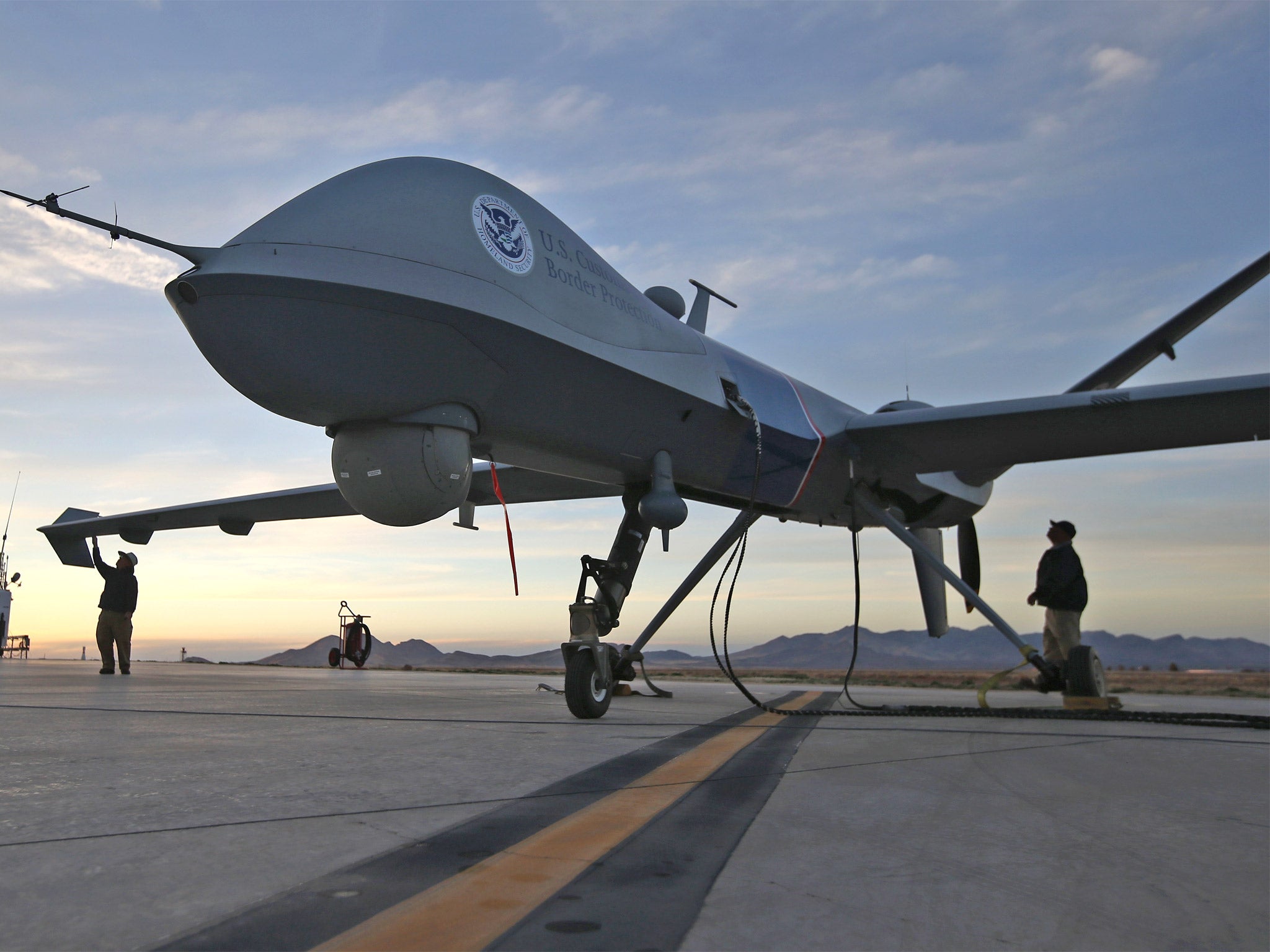British drone operators could be breaking international law, says former GCHQ chief

British military and intelligence personnel working at US Air Force bases on the controversial drones programme could be at risk of breaking international law, according to a new report from the former director of GCHQ.
Washington’s “remotely piloted aircraft” (RPA) programme has killed terrorists and civilians in Afghanistan, Pakistan and Yemen, drawing the condemnation of human rights organisations.
Sir David Omand, who headed GCHQ before moving to the Cabinet Office in Tony Blair’s administration ahead of the 2003 Iraq war, today warns the UK Government that it must put urgent safeguards in place to ensure those embedded with US military in facilities such as the Creech USAF base in Nevada comply with international law.
In his report for a Birmingham University commission exploring the regulation and use of RPAs, Sir David calls for new guidance to ensure the UK “does not inadvertently collude in RPA or other counter-terrorism actions that could be held contrary to international law.”
The key chapter of the report that deals with the legality of drone attacks will be uneasy reading for defence officials in Washington.
President Barack Obama has recently justified drone attacks as being part of the war against al Qaeda and its affiliates. The White House insists drones are deployed only where there is an imminent attack, where there is a self-defence justification, and where there is a “near certainty” that civilians will not be harmed.
The report however identifies concerns about the “wider global policy being followed by the US administration in using RPA for counter-terrorism strikes”. US drone operations are described as having “sinister cultural and political salience”.

The UK Government is known to have flown its own armed RPA missions in Iraq, Libya and Afghanistan, piloted from the RAF’s Intelligence Surveillance Target Acquisition and Reconnaissance (ISTAR) hub at RAF Waddington in Lincolnshire.
But Sir David’s report raises particular concerns about “embedded” RAF personnel working alongside US colleagues and piloting US drones on other operations. Specialist UK military and intelligence experts are based at Creech in Nevada, the USAF’s command and control facility for RPAs.
The United Nations recently argued that the closeness of the UK-US relationship made it “inevitable” that British intelligence contributes to US targeting in places like Pakistan and Yemen.
Cooperation between the two allies on drones will now extend to the coalition war against Isis in Syria where Reaper drones, previously operating in Afghanistan, are being readied for redeployment in the battle against Islamic extremists. Although the Commons backed UK military engagement in Iraq, no legal authority exists for action Syria.
The UK currently has 500 of its own drones. A £2bn investment programme will see numbers of RPA rise significantly over the next few years, while a £1bn contract with the French aerospace multinational Thales is expected to see a fleet of Watchkeeper drones boost the British Army’s targeting and surveillance capabilities. Future weaponisation of the Watchkeeper has not been ruled out.
Following criticism of drone warfare by Amnesty International and other human rights organisation, the report recommends that ministers offer regular public updates and input from Government lawyers.
An MoD spokesperson said: “All UK forces operate in accordance with International Humanitarian Law, following the principles of distinction, humanity, proportionality and military necessity. The UK’s clearly defined Rules of Engagement are formulated on this basis. The same strict Rules of Engagement that govern the use of conventional military aircraft also apply to Remotely Piloted Air Systems."
Jennifer Gibson, a lawyer at the legal charity Reprieve, said: “When figures such as the former head of GCHQ suggest Britain needs to distance itself from the US drone programme, the UK government needs to listen. British ministers also need to come clean about the level of support for the US drone programme.”
A US Predator drone flies over Kandahar Air Field, southern Afghanistan (AP)
Game of drones: The history of remote warfare
• The first large-scale use of drones by the UK occurred during the Iraq war in 2003. The Phoenix UAV (unmanned aerial vehicle) built by BAE Systems was retired in 2006.
• The official development of UK military drones was ordered in 2005 as part of the UK’s Defence Industrial Strategy. The MoD said the UK needed its own drones
• The UK’s only armed remotely piloted aircraft (RPA) is the Reaper. It is manufactured in the US by General Atomics. There are 10 Reapers in the UK inventory. Once largely based in Afghanistan, they are now being deployed in Operation Shader – the US-led operation against the Isis. Each Reaper costs $17m (£10m).
• All three British armed services now use drones. Last year the Royal Navy announced a £30m deal with Boeing for the ScanEagle drone. The Israeli-designed Hermes 450 was also leased by the UK for use in Afghanistan.
• Along with the Thales Watchkeeper, the next generation drone is the Taranis, named after the Celtic god of thunder. The development programme by BAE Systems has so far cost nearly £200m. Taranis is an UAV designed to fly long-distance intercontinental missions.